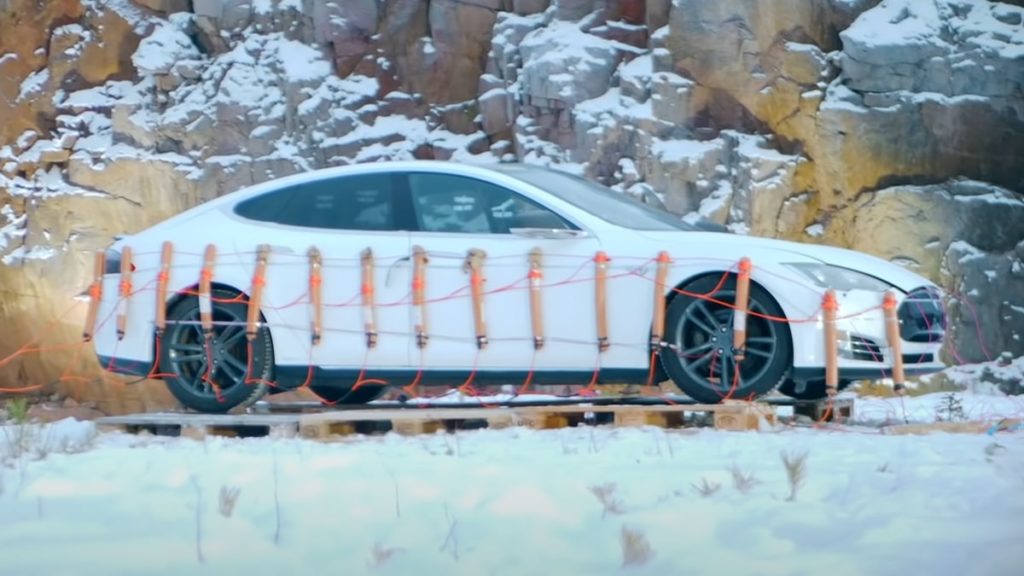Image: Tesla
A Tesla owner in Finland by the name of Tuomas Katainen has blown up his Model S with dynamite after receiving a disturbingly high quote for an out-of-warranty battery replacement.
As shared by YouTuber Pommijätkät (a channel that’s popular for blowing all kinds of stuff up), Katainen decided to turn his electric vehicle into scrap metal after realizing that the $22,000 that Tesla wanted for a replacement battery pack could have just gone toward a used Model S, which goes for around $35,000 euros in Finland, according to coverage by Electrek. The video shows Katainen’s white Model S lined with sticks of dynamite before exploding in a blaze of glory.
“With Model S production starting in 2012 and higher volumes not coming until 2014, only recently have those vehicles started to come off their powertrain warranty,” Electrek noted in its coverage. “We...
Continue reading...



